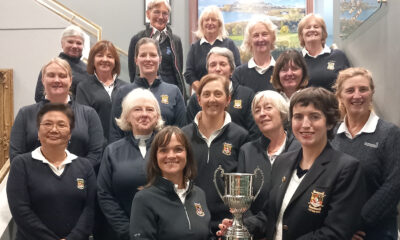Lifestyle
Lavender can thrive for years

By Debby Looney, gardening expert
One plant we associate with summer days must surely be lavender. Whether or not we have ever grown anything or have a garden, we seem to instinctively feel that lavender is part of summer. It is the one plant most beginners know, and buy. However, it is worth noting that it hails from hot, dry countries, in particular southern France, but the chalky areas of England. It needs quite the opposite growing conditions to what we can offer it here in Kerry! Therefore we must help it where we can, so that we are not completely wasting our time, effort and money! It prefers slightly alkaline, well-drained conditions. Plant in full sun, south facing is best. If your soil is wet, or heavy, mix plenty of organic matter, horticultural grit and sand in with it, and even then, planting on a sloped site is preferable. If the soil is very acidic, adding lime can greatly improve growth. Lavender can be grown very successfully in pots, and tolerate the occasional drying out quite well. Try to water them in the morning so they can dry before nightfall. This will prevent mouldiness, and subsequent rotting. Keeping your plants as dry as possible over winter improves their resistance to cold.
PRUNING
When happy, lavender can thrive for years. Pruning is absolutely essential and contrary to some advice, I find cutting back immediately after flowering, in late summer, is best. Lavender does not ‘break’ easily from old wood, that is, buds do not easily come from old wood, therefore if plants have become woody, it is usually better to replace them. Cuttings can be taken in early autumn or spring. They are easy to root, but the cuttings often rot just after developing roots. The only way to prevent this is by providing good ventilation and not over watering.
LAVENDER AND ROSES
Lavender has long been associated with roses, and is often used as under planting or companion planting in rose gardens. Some gardeners believe it can keep aphids at bay, but I cannot attest to that! In the border, it is beautiful planted with bright green alchemilla mollis, or ladies mantel.
While there are many varieties of lavender to choose from, there are three distinct types: French (or Spanish), English, and a hybrid of the two called Lavendin. The ones we see in garden centres are usually the first two. French lavender has flowers with ‘ears’; two long petals at the top. English lavender grows better in our wet climate. It has the stronger scent, a bushier more compact growing habit, and, in my opinion, better colour.
ALTERNATIVE
Unfortunately, a lot of people have limited success with lavender, due mostly to our weather. Two alternatives to try are rosemary and nepeta. The scent of rosemary will evoke the same sense of summer warmth as lavender, but is much sturdier in our climate. It will flower in winter, and sporadically throughout the year, adding colour as well as scent to the garden. It can be upright or creeping, the creeping one being particularly useful in large groceries with poor soil. Nepeta, also known as cat mint is ideal to replace lavender in terms of flowering time and colour. Throughout the summer catmint is a haze of blue/mauve. It has a pungent smell which is not to everyone’s liking, but is completely hardy and reliable. A tall version, 40cm, is ‘Six Hill's Giant' and a smaller 25cm one to try is the deep blue ‘Purrsian Blue' - (not a spelling error- the creators of new varieties are playing with the ‘cat’ theme!) Nepeta disappears over winter, and the stems can be tidied away as they dieback, butchery will always return early in the new year.
News
Killarney couples renew vows at St Mary’s Cathedral
Several couples celebrating significant wedding anniversaries gathered last Saturday at St Mary’s Cathedral to renew their vows. The annual event, organised by Killarney Parish Administrator Fr Kieran O’Brien, is a […]
News
Trainee chef wins two medals at Chef Ireland Competition
Iryna Kravchenko, a chef trainee from Killarney studying on the City & Guilds Diploma in Food Production and Cooking Programme, has won two medals at the Chef Ireland Competition. The […]
























